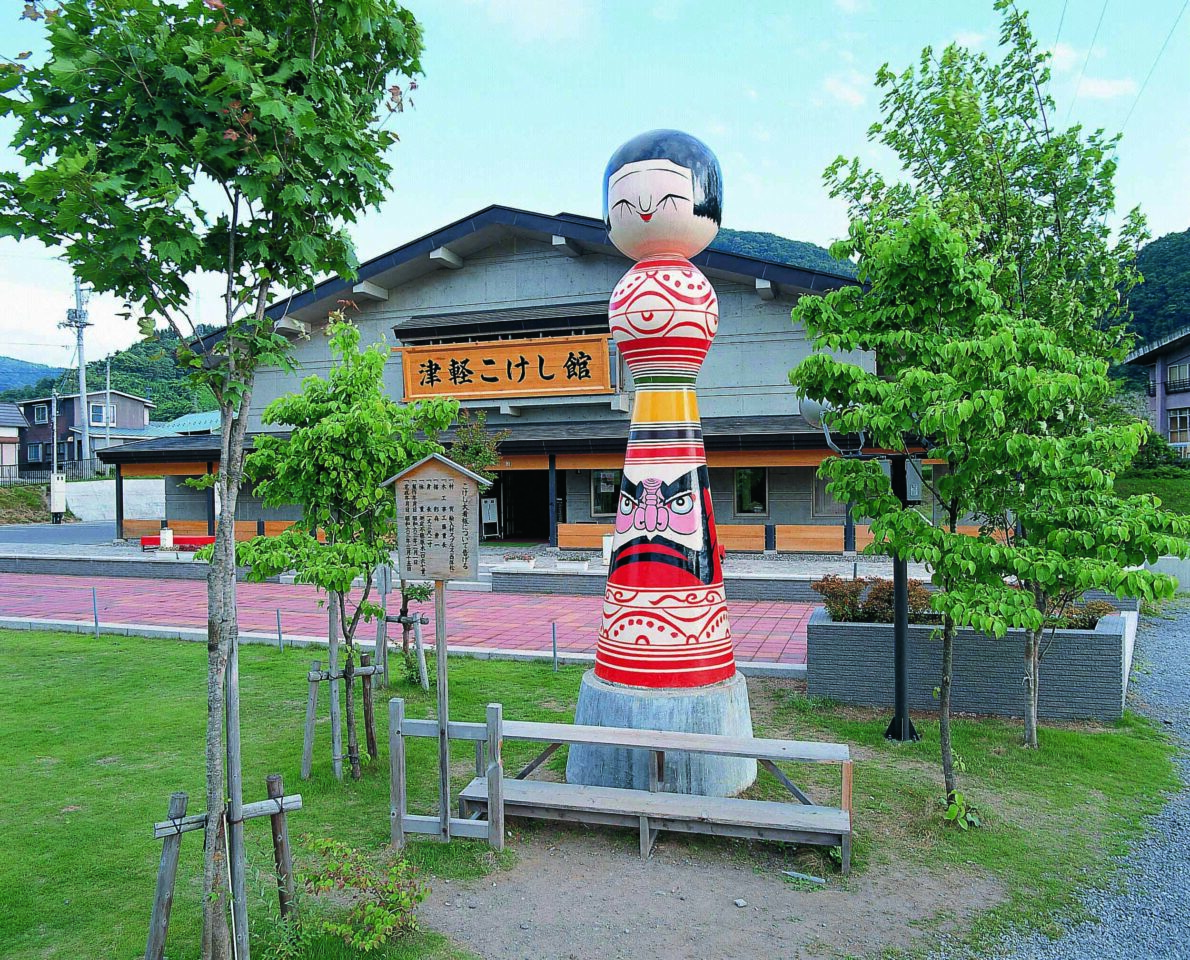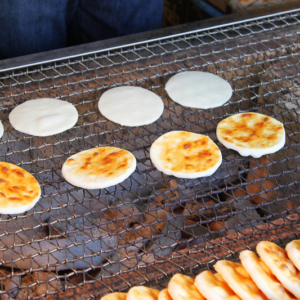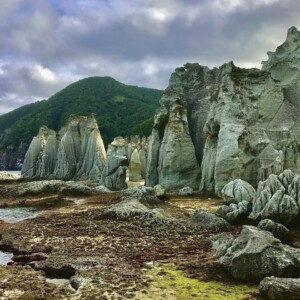
[Aomori Prefecture] Not just food! Shining techniques from Tohoku! 5 selections of craft souvenirs
table of contents
- 1 Speaking of Aomori crafts, this is it! "Tsugaru Lacquerware"
- 2 Adorable and nostalgic "Tsugaru Kokeshi"
- 3 Kogin-zashi, a stylish sashiko style created to protect against the cold
- 4 100% natural materials! Akebit Vine Crafts are filled with healing and the warmth of nature
- 5 Stylish and modern eco-friendly woodwork "Bunaco"
- 6 summary
Aomori Prefecture is located in the northernmost part of the Tohoku region
Many people travel to Aomori because of its beautiful nature, the Sannai-Maruyama ruins, the Nebuta Festival, and its rich food culture. A variety of handicrafts have been nurtured in the harsh winters of Aomori
The prefecture has designated everyday items made using traditional handcrafting techniques as "Aomori Prefectural Traditional Crafts" and is protecting them
This time, we will introduce five crafts that represent Aomori and have been designated by the prefecture. Why not try to find a special item that was born in Aomori?
Speaking of Aomori crafts, this is it! "Tsugaru Lacquerware"

First, we would like to introduce "Tsugaru lacquerware."
This is a technique passed down in the Tsugaru region in the western part of the prefecture, where lacquer is used to make wooden tableware and other items. It developed under the protection of the Hirosaki domain during the Edo period and is considered to be Aomori's greatest traditional craft
They are famous for their classic products such as chopsticks, as well as tableware such as bowls, candy trays, bento boxes, and trays, but they also make vases, tables, hand mirrors, and fountain pens
High-quality hiba wood from Aomori is processed and shaped, then repeatedly coated with lacquer, sanded, and polished over time, taking over a year to complete. The lacquering technique, which involves over 40 steps, is a highly skilled craftsmanship that has been designated an Important Intangible Cultural Property of Japan and has been gaining increasing international recognition in recent years. Beautiful and durable, Tsugaru lacquerware makes a souvenir that will last a lifetime
Adorable and nostalgic "Tsugaru Kokeshi"

Next, we will introduce kokeshi dolls, which have been popular among the general public as children's toys since the Edo period
There are 11 production areas in Tohoku, and the Tsugaru region is one of them
Tsugaru Kokeshi dolls are carved from a single piece of wood and are characterized by their bowl-cut heads, narrow waists, and flared legs. They are often decorated with colorful designs such as peonies, daruma dolls, and Ainu patterns
Recently, kokeshi dolls have expanded beyond the traditional girl's shape to include zodiac animals, Hina dolls, and even the much talked about Amabie-shaped kokeshi dolls, as well as products such as netsuke and earpicks with small kokeshi dolls attached. You can also try painting at the Tsugaru Kokeshi Museum (Kuroishi City), an exhibition facility related to kokeshi dolls, and create your own one-of-a-kind original kokeshi doll. These simple kokeshi dolls, hand-painted one by one by artisans, are the perfect classic souvenir from the past
Kogin-zashi, a stylish sashiko style created to protect against the cold

Kogin-zashi is a type of sashiko embroidery that is passed down in Hirosaki and Aomori cities in the Tsugaru region. In addition to clothing such as kimono obi belts, ties, and slippers, it is also used to make bags, drawstring pouches, and even accessories such as book covers, coin purses, and bookmarks
So, how did Kogin embroidery, one of Japan's three major sashiko styles, come about?
During the Edo period, farmers in Tsugaru were prohibited from using cotton in order to save money. So they wore linen kimonos, but linen was too cold in the bitter cold. So they started using sashiko stitching on their kimonos to make them a little warmer...and this was the beginning of Kogin embroidery
Kogin embroidery is hand-sewn with cotton thread on indigo-dyed linen fabric, allowing you to enjoy the contrast between the color of the fabric and the white of the thread, as well as beautiful geometric patterns
100% natural materials! Akebit Vine Crafts are filled with healing and the warmth of nature

As the name suggests, "Akebia vine crafts" are crafts made by weaving Akebia vines
During the Edo period, they began to be made as souvenirs for visitors to Hirosaki City, which has hot springs, but it seems that similar items already existed in the Jomon period. Even today, they are made by hand, carefully weaving Akebia vines collected from the mountains, just like in the old days
Products such as baskets, stools, lampshades, and trays have a lustrous color and a natural warmth. They are made from natural materials, using plants as they are, but they are highly durable and the more you use them the more they become comfortable in your hand. There is also a workshop that accepts repairs, so the old custom of repairing and using high-quality items even if they are old remains. The shapes of the bags are also quite stylish
Stylish and modern eco-friendly woodwork "Bunaco"

The last product we would like to introduce is "BUNACO," a wooden product made from beech wood by BUNACO Co., Ltd. in Hirosaki City
Bunaco began with research at a prefectural testing facility in the 1950s
Although it has a shorter history than other Aomori traditional crafts, it has been praised for its modern and stylish form and unique ecological manufacturing method. It was the first in the prefecture to receive the Good Design Award in 2012, and was used at the Toyako Summit in 2008
They make effective use of local resources in Aomori, Japan's number one beech producing region, by rolling and layering thinly sliced wood like a skewer. This manufacturing method allows them to create unique shapes, and in addition to tableware, they also produce interior products such as lampshades, stools, and tissue boxes, as well as speakers
INFORMATION
- Bunaco Co., Ltd. website: http://www.bunaco.co.jp/
summary
This time, we've introduced five crafts that make great souvenirs from Aomori. None of them are sublime works of art, but rather familiar items for everyday use. They are of high quality, and once you have them, you can use them for a long time, and the more you use them, the more they develop their own character. They are great for buying for friends, family, colleagues, or even as a treat for yourself. Aomori is not bound by tradition, but is developing products that are in tune with the times. Now that traditional, simple, and good things are starting to be rediscovered, why not consider a unique Aomori craft as a souvenir?



![[Shimokita Peninsula, Aomori Prefecture] Geopark Shimokita Peninsula. A rich hot spring springs from the northernmost peninsula of Honshu 24734759_m](https://jp.neft.asia/wp-content/uploads/2023/02/24734759_m-150x150.jpg)
![The mysterious world of the Shimokita Peninsula of Geopark: "The northern limit of monkeys on Osoreyama and Butsugaura" [Aomori Prefecture] 25110883_m](https://jp.neft.asia/wp-content/uploads/2022/11/25110883_m-150x150.jpg)
![The gorgeous "Noheji Gion Festival" and Kitamae Ship port call "Noheji" [Aomori Prefecture] 4031_Noheji Gion Festival](https://jp.neft.asia/wp-content/uploads/2023/03/27d8816076df6701eb2d6ec6c91e5169-150x150.jpg)
!["Yaki Ikadori" is famous for its squid curtains! Many repeat customers are coming to the condensed flavor [Aomori Prefecture] 1088_Squid Curtain](https://jp.neft.asia/wp-content/uploads/2018/11/621b49eff7eed2fb8caee235a00963e0-150x150.jpg)
![[Aomori Prefecture] How cold is it in Aomori? Introducing cold weather measures for your winter trip to Aomori! 25097708_m](https://jp.neft.asia/wp-content/uploads/2023/02/25097708_m-150x150.jpg)
![[Aomori Prefecture] Let's go on a journey to see clay figures! Introducing highlights and spots! doguu1](https://jp.neft.asia/wp-content/uploads/2023/02/doguu1-150x150.jpg)

![[Aomori Prefecture] 6 recommended beaches in Aomori Prefecture! Aomori Prefecture is full of oceans, including the Pacific Ocean, the Sea of Japan, Mutsu Bay, and the Tsugaru Strait! Aomori_Asamu](https://jp.neft.asia/wp-content/uploads/2023/07/0f45f17b8ba09afb066a09880e47091d-150x150.jpg)











